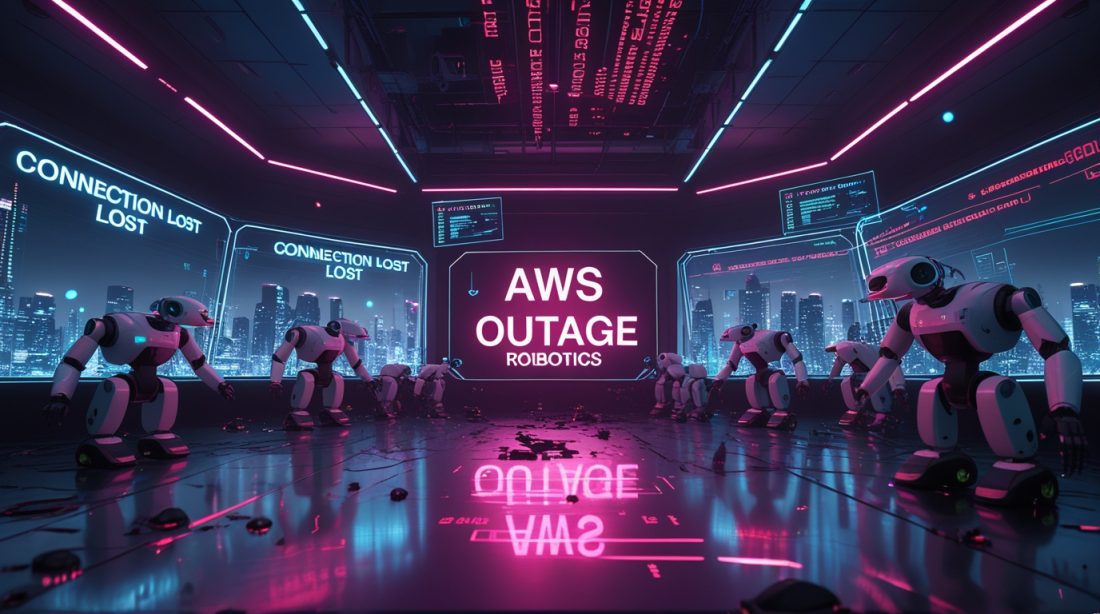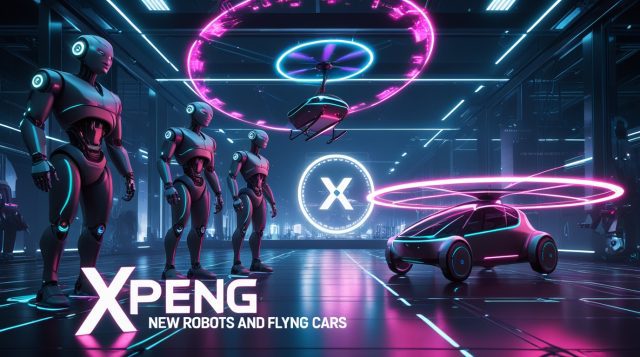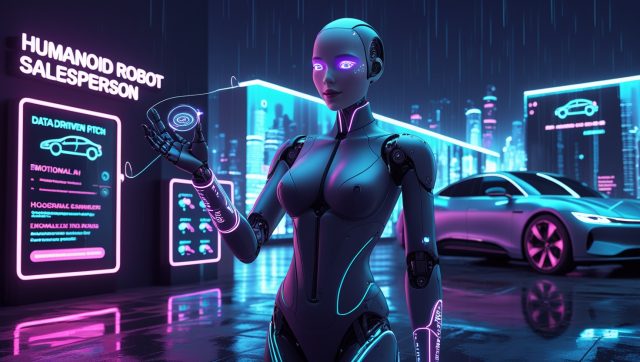Fast Facts
The AWS outage of 2025 disrupted global apps and services — but its deeper impact hit robotics hard. From warehouse bots to industrial drones, the AWS outage robotics failure exposed how dependent machines still are on cloud infrastructure. This event proves that autonomy today still means connectivity. The future? Hybrid autonomy, edge AI, and offline-ready robotics built for resilience, not reliance.
AWS Outage 2025: How a Cloud Failure Exposed the Fragility of Global Robotics
The internet’s backbone just buckled. A major Amazon Web Services (AWS) outage has triggered a digital blackout across the world — crippling everything from Snapchat and Fortnite to smart home devices and industrial cloud APIs. But beneath the noise of social media outrage lies a deeper crisis: the AWS outage robotics failure that exposed how deeply the robotics industry depends on centralized cloud systems.
While millions of users refresh their apps, the robots that quietly keep the world running are facing their own silent downtime.
⚠️ What Happened — And Why It Matters Beyond Apps
Early reports from Reuters and The Washington Post confirm that AWS suffered a global disruption stemming from DNS and routing issues within its infrastructure.
For everyday users, it meant frozen logins and failed loads. But for autonomous systems, this outage means something far worse: a complete loss of cloud coordination.
- Warehouse robots can’t sync routes or update tasks.
- Industrial drones lose telemetry channels.
- AI-based logistics and security systems pause mid-operation.
These failures aren’t just temporary glitches — they’re warnings that our machines are only as independent as their cloud connection.
AWS Outage Robotics Breakdown: Why Machines Still Rely on the Cloud
Most modern robots — from Boston Dynamics-style logistics units to agricultural harvesters and surveillance drones — rely on cloud servers for real-time processing, coordination, and updates.
Their intelligence isn’t local; it’s streamed.
- AWS IoT Core manages telemetry for millions of connected machines.
- AWS RoboMaker provides simulation environments where robots “learn.”
- AWS SageMaker powers the AI models that guide their behavior.
When AWS stumbles, those robotic brains go blank.
This is why the outage feels different for the robotics world: it exposes a truth many engineers already know but rarely say aloud — “autonomy” today still means dependency.
Why the Industry’s Centralization Is Dangerous
Industrial automation has evolved rapidly, but resilience hasn’t kept pace with intelligence.
The convenience of cloud AI created a system where almost every robotic network, from manufacturing to defense, routes commands and updates through centralized pipelines owned by a few tech giants.
This structure works — until it doesn’t.
One DNS failure, one misconfigured region, and suddenly entire fleets of autonomous machines across continents can’t communicate.
It’s not theoretical anymore; today’s outage proved it.
If this had occurred during a logistics surge, a medical delivery run, or a defense simulation, the consequences could have been catastrophic.
Why Hybrid Autonomy Is the Only Way Forward
The outage reignites an ongoing debate: should robots depend on the cloud at all?
The answer isn’t to abandon it but to balance it.
Hybrid autonomy — where AI runs locally on edge hardware while the cloud handles large-scale learning — is the sustainable path forward.
Imagine a warehouse robot that can continue operating even when cloud connectivity drops.
Imagine an agricultural drone that stores its own vision model and updates only when online.
That’s the evolution robotics needs — machines that learn from the cloud but live independently of it.
As WE noted in earlier analyses like Quantum Machine Learning Robotics Decision-Making: 7 Best Breakthroughs Defining Autonomy in 2025, the future of robotics will be shaped not by speed or design, but by how much intelligence can survive offline.
Why This Outage Is a Wake-Up Call for the Entire Tech Stack
AWS’s temporary recovery is not the end of this story — it’s the start of a bigger realization.
The entire AI and robotics ecosystem depends on infrastructure that’s too centralized, too opaque, and too human-controlled.
Even “smart” robots can’t act when the cloud fails, which means true autonomy hasn’t been achieved yet.
This event should force tech leaders, engineers, and policymakers to ask harder questions:
- How much of the world’s automation is built on a single provider’s uptime?
- What would happen if multiple regions failed simultaneously?
- And most importantly — can a robot be trusted if it can’t think without permission from the cloud?
Why This Moment Defines the Next Phase of Industrial AI
In every disruption lies a shift. For robotics, this AWS outage might be the turning point — where edge AI, quantum decision-making, and local inference systems begin to dominate cloud-centric automation.
Companies investing in offline-ready robotics frameworks will gain the real advantage.
Because resilience, not reliance, will define the next phase of industrial intelligence.
Final Thought:
The internet just reminded us that even the smartest machines depend on human infrastructure.
If robots are to become truly autonomous, they must first learn to survive when the cloud disappears.
Related Reading


